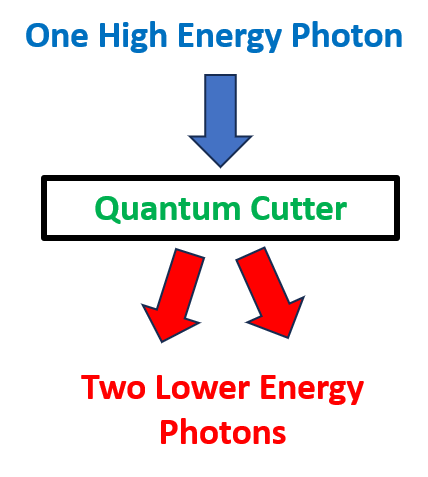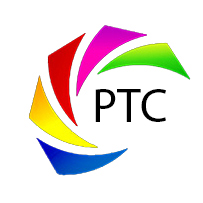A quantum cutting phosphor is a type of phosphor material that can convert a single high-energy photon into two or more lower-energy photons. This process take place by energy down-conversion within the phosphor material. Quantum cutters can be used to improve energy efficiency in a wide range of applications ranging from solid-state lighting to solar cells or photovoltaic.
In simpler terms, when a high-energy photon (like ultraviolet or blue light) hits the quantum cutting phosphor, it gets absorbed and then re-emitted as two or more lower-energy photons (like visible or infrared light). This can potentially double the efficiency of light conversion compared to traditional phosphors. Quantum cutters can have a quantum efficiency greater than 100%, meaning they can emit more photons than they absorb. That why they have been proposed as a promising way to improve the efficiency of conventional solar cells by absorbing and converting high energy UV-blue sunlight photons into near-infrared photons that can be optimally utilized by solar cell devices and converted to electricity. Quantum cutting phosphors usually involve rare earth ions like Tb³+, Yb³+, or Pr³+ doped into a suitable host material, which allows for the necessary energy level transitions to occur.
In essence, quantum cutting phosphors offer a way to increase the efficiency of light-based technologies by maximizing the utilization of the absorbed energy. Quantum cutting, however, is a complex phenomenon, and the specific mechanisms vary depending on the type of phosphor material.

A simple illustration of a quantum cutter where a single blue photon (450nm) is converted to two near-infrared photons (900nm).
